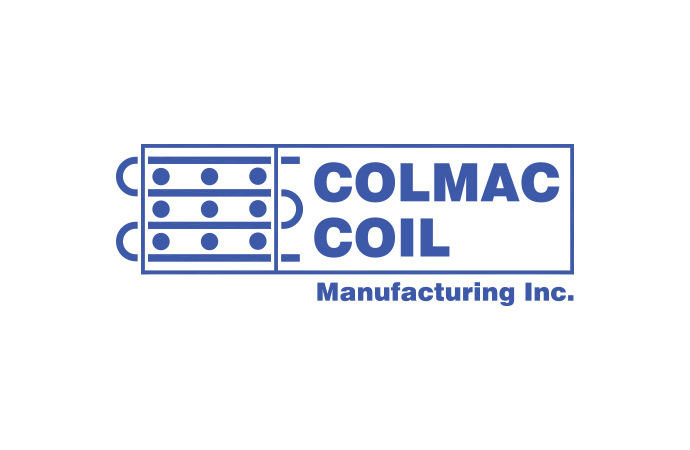Jerry von Dohlen of Newark Refrigerated Warehouse helped affect critical changes to the ammonia refrigeration laws in New Jersey to pave the way for he and others to convert from R22 to low-charge ammonia systems. In an exclusive interview for the sixth edition of Accelerate America, von Dohlen highlighted the reduced strain on warehouses and subsequent demand for low charge ammonia.

In the 1920s, the state of New Jersey passed a law requiring operators of refrigerated warehouses that use ammonia as a refrigerant to have engineers on premises 24 hours a day, seven days a week to ensure the safety of the facility.
Today, that requirement would add about US $900,000 in annual salaries to the payroll of operators opting for ammonia, effectively eliminating it as a viable refrigerant.
As a result, the vast majority of cold-storage facilities in New Jersey employ R22, the ozone-depleting refrigerant that is being phased out across the U.S.
But that scenario is quickly changing thanks to the efforts of Gerard von Dohlen, president of Newark Refrigerated Warehouse, which deals largely with imports and exports at Port Newark-Elizabeth.
In 2013, von Dohlen and Bruce Badger, then president of the International Institute of Ammonia Refrigeration (IIAR), met with the New Jersey Department of Environmental Protection and Department of Labor and negotiated an exemption to the old law.
To gain the exemption, an operator must meet three criteria: use 5,200 pounds (2359 kg) or less of ammonia; run a refrigeration system that is IIAR-2 compliant; and employ one full-time engineer who is certified by RETA (Refrigerating Engineers & Technicians Association).
The exemption, in effect since June 2013, is in the process of being put in writing, and will enable most of the public refrigerated warehouses to convert to modern low-charge ammonia systems.
Moreover, by requiring ammonia charges at 5,200 pounds or less, it enables operators to avoid having to comply with the most stringent aspects of the federal Process Safety Management (PSM) and Risk Management Plan (RMP) rules.
Newark to become first low-charge cab off the rank
Von Dohlen purchased the Newark plant (and the company) in 1994 and used ammonia under the original requirements until 15 years ago, when he switched to R22. He plans to revert to ammonia under the exemption within two years, becoming one of the first cold-storage operators to do so.
Von Dohlen is installing an automated control system to monitor the ammonia. “If anything goes wrong, it will notify us and the contractors.” In addition, if the sensors in the engine rooms sense ammonia, high-speed fans will be activated to evacuate the gas.
The ammonia charge will range from about 2,000 (907 kg) pounds in one system and 600 (272 kg) pounds in a second (the latter confined to the engine room).
To support the change in the New Jersey law, Essex College in Newark, the IIAR and RETA have launched an associate program to train young people to become operating engineers in ammonia refrigeration plants.
“There is no history of ammonia refrigeration in New Jersey going back to the 20’s, so we needed an infrastructure to train people, and we got Essex to agree to have a program.”
Van Dohlen eagerly anticipates phasing out of R22. With R22’s phaseout proceeding apace, the price of the refrigerant has skyrocketed. “Two years ago I paid $24 a pound ($10.8 a kg) for R22; it’ll be $40-$50 a pound ($17.3-$21.5 a kg) by 2016,” Von Dohlen said.
He regards ammonia as a much better alternative to R22 than an HFC, given that HFCs are likely on their way out over the next decade.
“Europe is eliminating two-thirds of HFCs by 2030, and we expect the U.S. to do the same,” he said. “So if you put HFC in, the most it’s going to last is 15 years, and then you’ll have to convert again.”
Innovative Designs
The Newark facility features two innovative refrigeration systems and consists of two adjoining buildings – covering 235,000-square-feet (71,628 m2).
The larger nine-story building has two refrigeration systems, both currently using R22 but converting to ammonia.
For 12 freezer rooms (O F/-17.2°C) and four medium temperature rooms (32 F-40 F in two (0°C-4.4°C); 50 F-55 F in two (10°C-12.8°C), von Dohlen runs a DX refrigeration system that includes Colmac aluminum evaporators controlled by Danfoss motorised control valves.
The system uses electric defrost. About 4,000 pounds (1814 kg) of R22 are used currently in the system; half as much ammonia will take R22’s place. Well water at 57 F (13.9°C) is piped in to condense the refrigerant.
For the dock staging area and elevator shaft 34 F (1.1°C) in the original building, von Dohlen operates an entirely different refrigeration system that employs brine and air as secondary coolants.
In the decade-old adjoining building, von Dohlen, who did the basic refrigeration design for both buildings, installed a larger version of the same brine/air secondary system to cool one large freezer room. The new building coming in two years will have a version of the same system.
Dohlen says his plant is the only one in the industry that uses brine as both a dehumidifier and cooling agent.
Maintenance for the system is simple, he said. “We don’t have a bunch of valves opening and closing. There’s no control system; it just runs at 100% all the time.”
Download Issue 6 of Accelerate America here
Download Issue 6 of Accelerate America here
MORE INFORMATION
Related stories

_1475587414.png)



